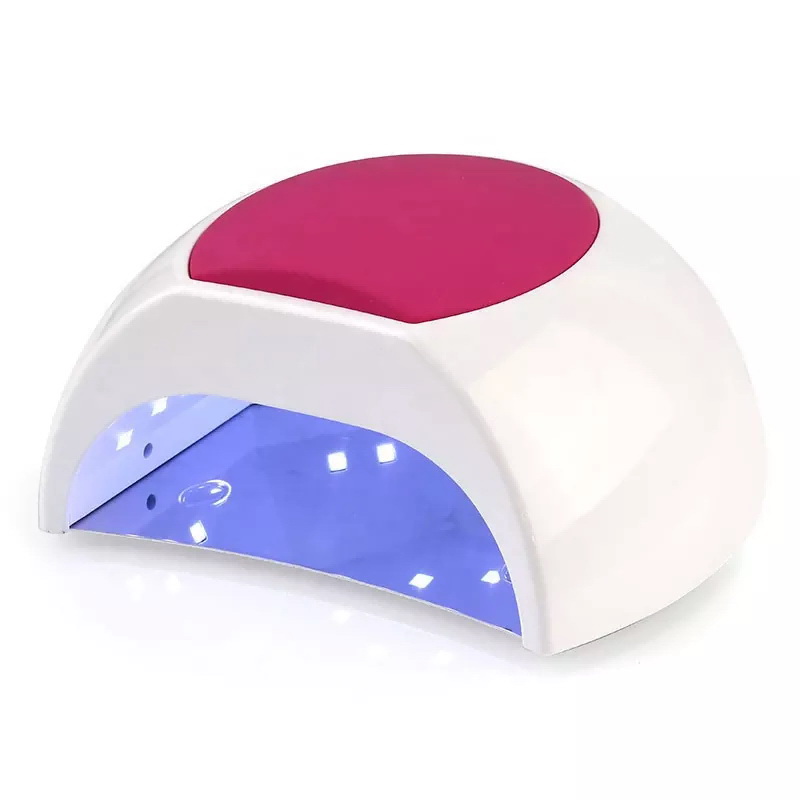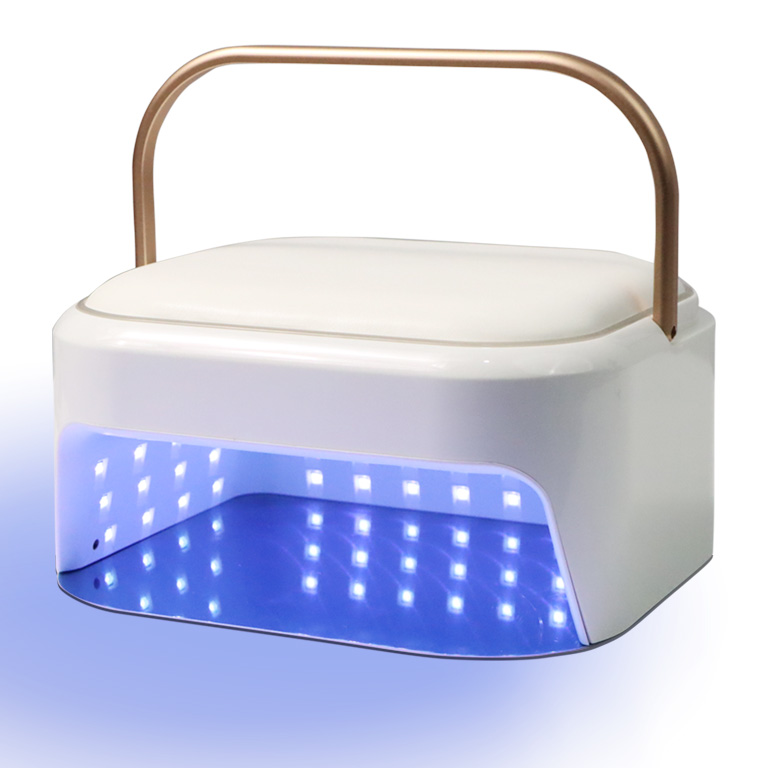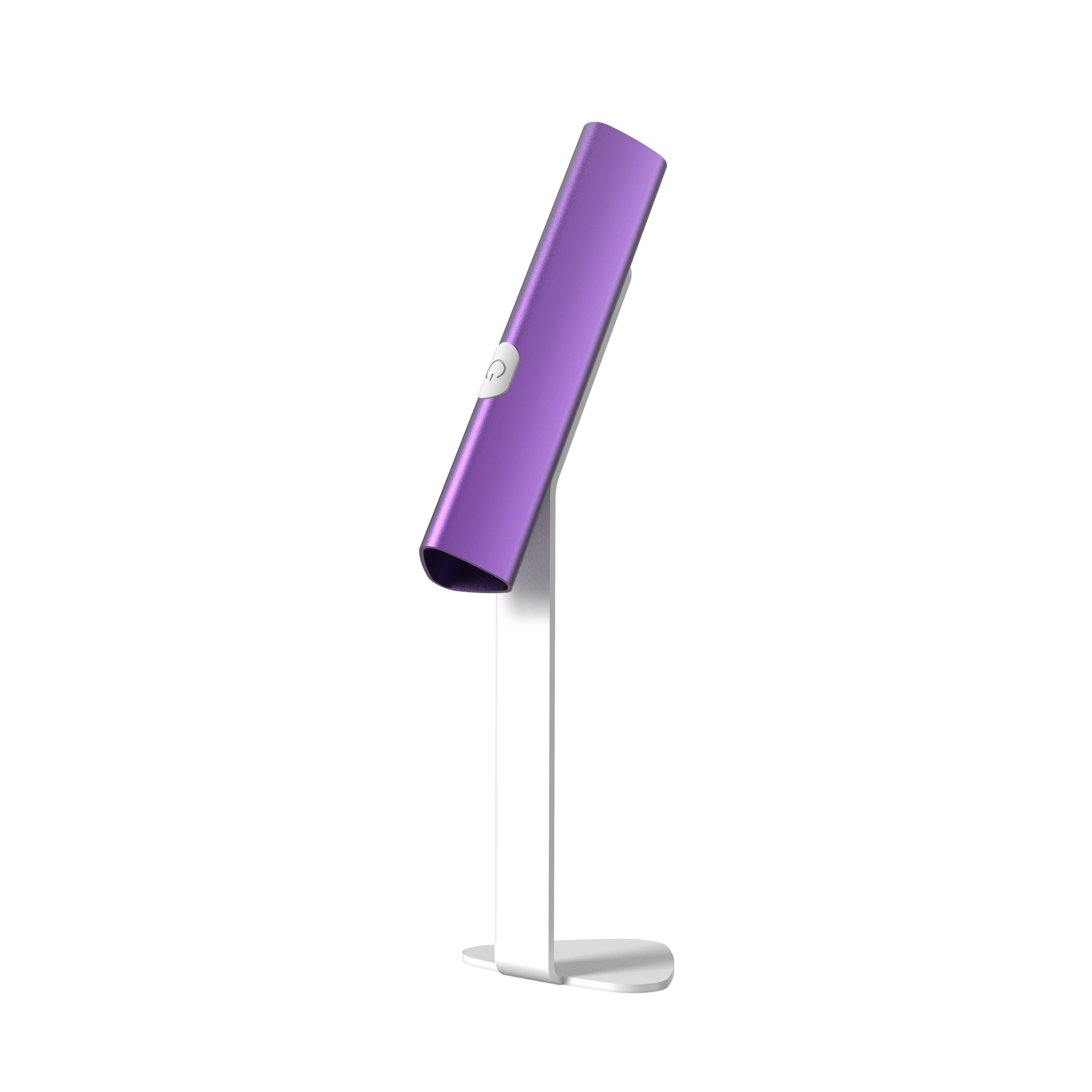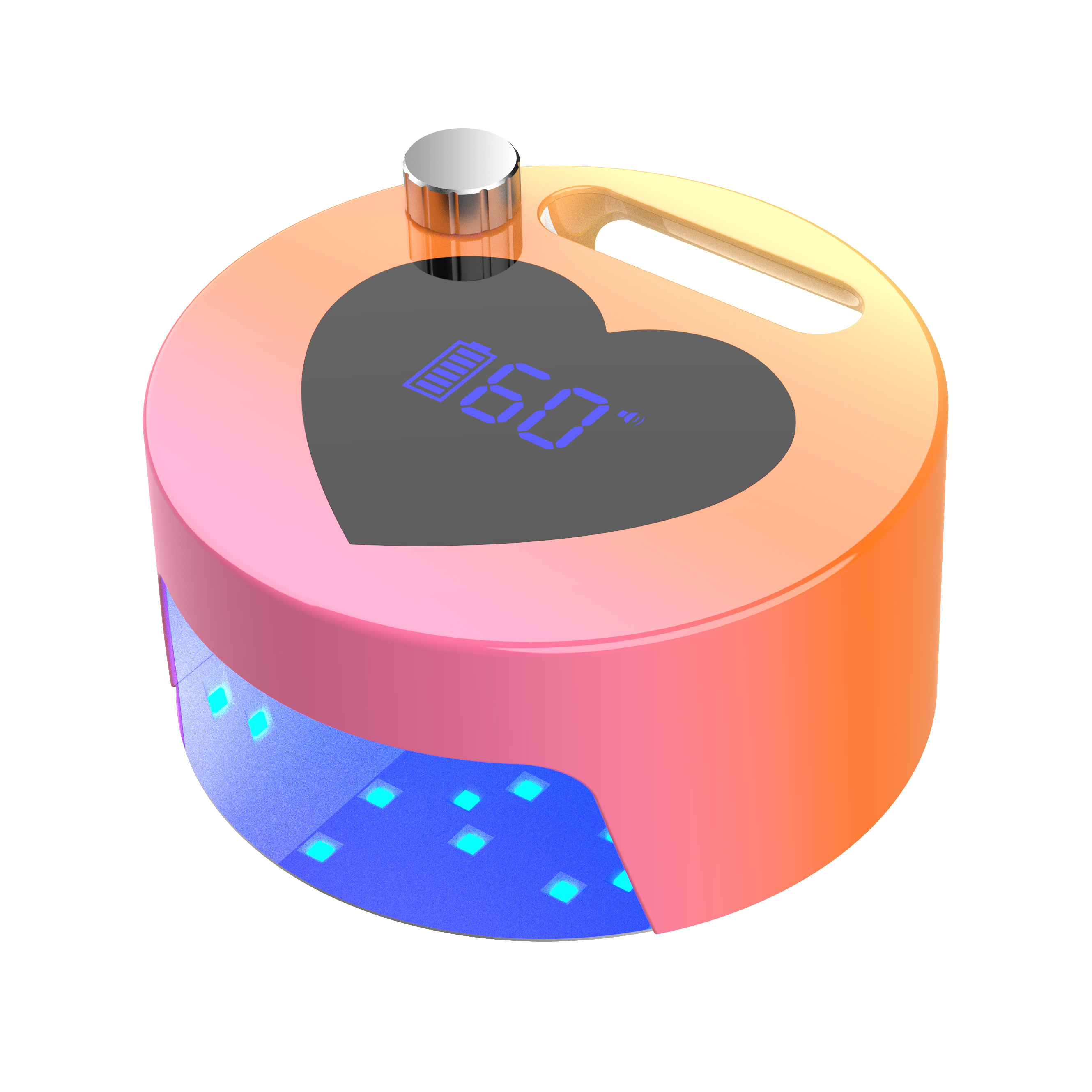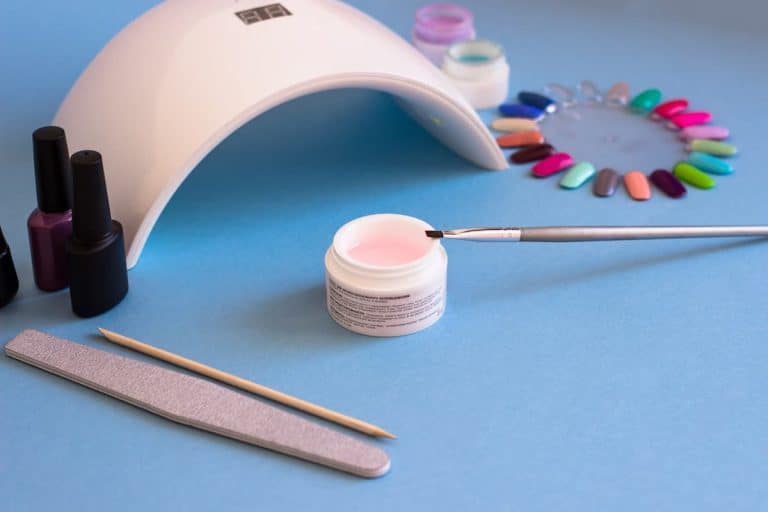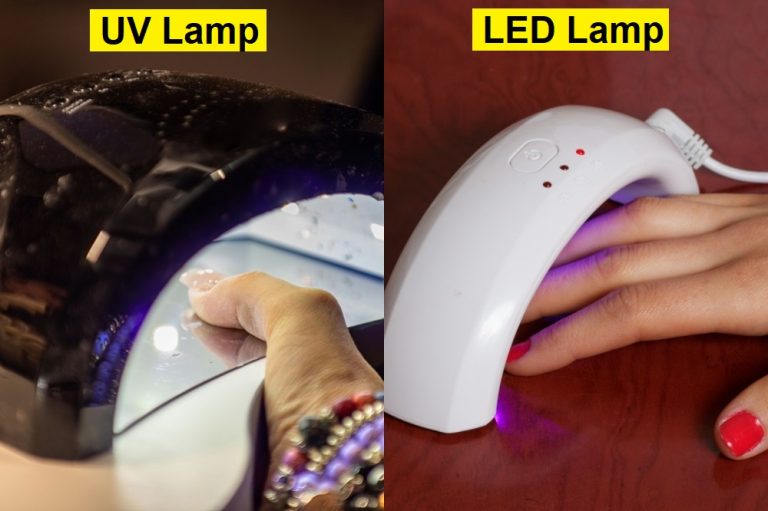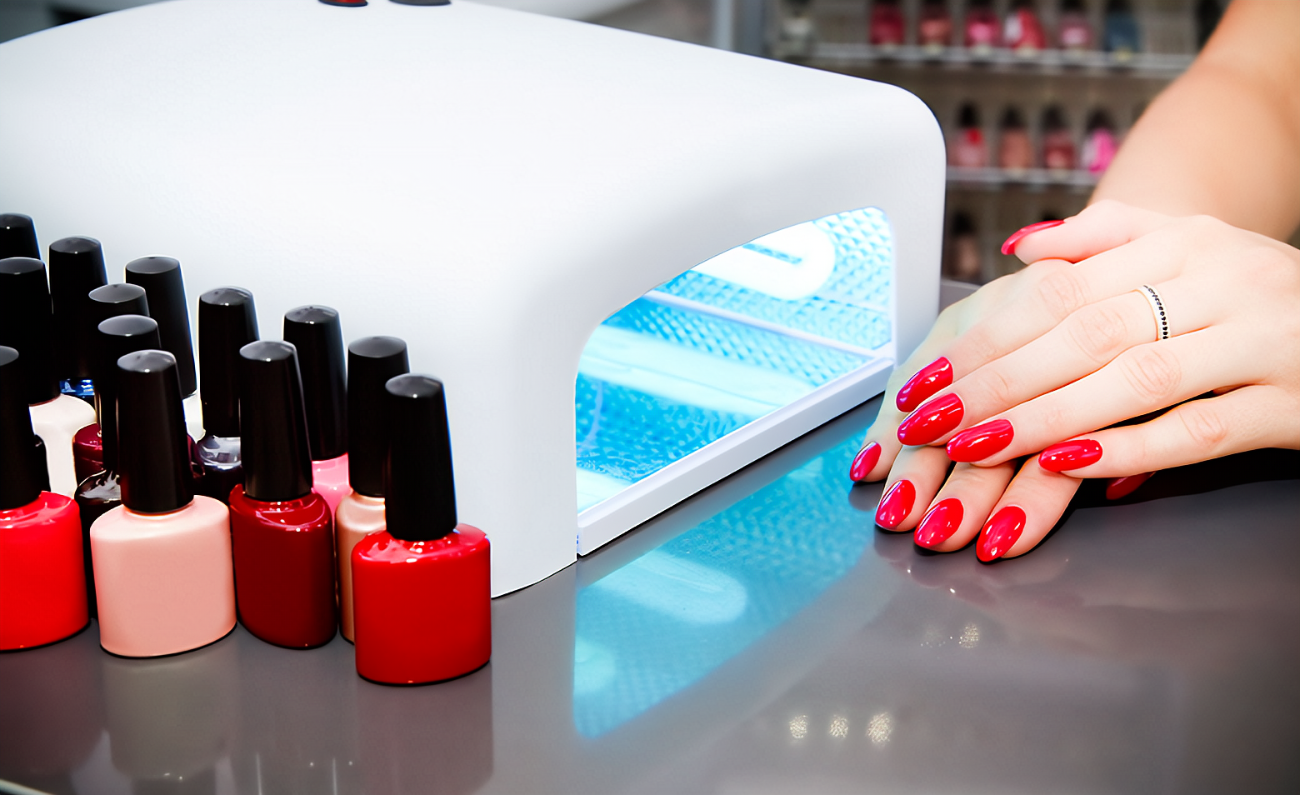Welcome to the world of UV nail lamps! In this article, we will delve into the question that’s on every nail enthusiast’s mind: Are UV nail lamps safe? Whether you’re a professional nail technician or a DIY manicure lover, understanding the risks and precautions associated with UV nail lamps is crucial for maintaining healthy and beautiful nails.
UV nail lamps have become an essential tool in the nail industry, offering quick and efficient nail drying and curing. However, concerns have been raised about the potential harmful effects of UV exposure on the skin and nails. In this comprehensive guide, we will explore the science behind UV nail lamps, examine the associated risks, and provide you with valuable precautions to ensure a safe and enjoyable nail experience.
So, if you’re ready to shed light on the safety aspects of UV nail lamps and learn how to protect yourself while achieving stunning nail designs, let’s dive in and unravel the mysteries surrounding UV nail lamp usage.
UV Light Exposure Effects on Nails
When it comes to achieving long-lasting and durable manicures, UV light exposure plays a vital role. Understanding how UV light affects our nails can help us appreciate the benefits it offers. Let’s explore the effects of UV light on nails in more detail:
UV light helps in nail curing: UV nail lamps emit a specific wavelength of ultraviolet light that activates photoinitiators present in gel nail products. These photoinitiators, when exposed to UV light, trigger a chemical reaction that leads to the curing or hardening of the gel polish. This curing process ensures that the gel adheres to the nail surface securely, providing a strong and durable manicure.
Enhanced longevity of manicures: By facilitating the proper curing of gel polish, UV light exposure contributes to the extended lifespan of manicures. When the gel polish is adequately cured under the UV lamp, it forms a sturdy bond with the nail, minimizing the risk of chipping or peeling. This results in manicures that can last for weeks without losing their shine or vibrancy.
It’s important to note that while UV light exposure offers these benefits, it’s essential to exercise caution and take appropriate measures to protect the skin during the nail curing process. The next section will delve into the potential risks associated with UV nail lamps and the precautions you can take to ensure safety.
Working Principle of UV Nail Lamps
UV nail lamps are designed to emit ultraviolet (UV) light, specifically UVA and sometimes UVB wavelengths, to facilitate the curing process of gel nail products. Let’s take a closer look at how UV nail lamps generate UV light and understand their construction and working mechanism:
1. UV Light Generation: UV nail lamps utilize specialized bulbs or LED bulbs that emit UV light when powered on. These bulbs are specifically designed to emit UVA wavelengths, typically in the range of 320 to 400 nanometers (nm). Some advanced UV nail lamps may also emit a small amount of UVB wavelengths, which fall within the range of 280 to 320 nm.
2. Construction of UV Nail Lamps: UV nail lamps consist of the following components:
- Lamp Housing: The outer structure of the UV nail lamp, usually made of durable plastic or metal, houses the internal components.
- UV Bulbs or LED Bulbs: These are the light sources that generate UV light when the lamp is turned on. The bulbs are strategically placed inside the lamp for optimal coverage.
- Reflectors: Reflective surfaces or mirrors are positioned within the lamp to help distribute and focus the UV light evenly onto the nails, ensuring efficient curing.
- Timer and Controls: UV nail lamps often feature built-in timers and control buttons, allowing users to set the desired curing time and adjust lamp settings as needed.
- Ventilation: Some UV nail lamps incorporate ventilation systems to prevent overheating and ensure a comfortable user experience.
3. Working Mechanism: When the UV nail lamp is switched on, the UV bulbs or LED bulbs inside the lamp emit UV light. The reflective surfaces and positioning of the bulbs ensure that the UV light is evenly distributed across the nail bed.
The gel nail products applied to the nails contain photoinitiators that are sensitive to UV light. When exposed to the emitted UV light, these photoinitiators initiate a chemical reaction, leading to the curing or hardening of the gel polish. The curing process creates a strong bond between the gel and the nail surface, providing a long-lasting and durable manicure.
Understanding the construction and working principle of UV nail lamps allows us to appreciate their role in achieving well-cured and beautifully manicured nails. In the next section, we will delve into the potential risks associated with UV nail lamps and the precautions you can take to ensure safety during their use.
Hazards of UV Light Exposure
Long-term exposure to ultraviolet (UV) light raises concerns regarding potential risks to the skin. In this section, we will discuss the potential hazards associated with prolonged UV light exposure and provide insights from scientific research on UV light radiation:
1. Skin Damage from UV Radiation: Scientific studies have shown that excessive exposure to UV radiation, including UVA and UVB, can lead to various adverse effects on the skin. These effects may include:
- Sunburn: Overexposure to UVB radiation can cause sunburn, characterized by redness, pain, and peeling of the skin.
- Premature Aging: Both UVA and UVB radiation contribute to premature skin aging, leading to the development of wrinkles, fine lines, and age spots.
- Skin Cancer: Prolonged exposure to UV radiation is a known risk factor for skin cancer, including basal cell carcinoma, squamous cell carcinoma, and melanoma.
2. Cumulative Effects and Risk Factors: It’s important to note that the effects of UV radiation on the skin are cumulative. Regular and repeated exposure to UV light, whether from natural sunlight or UV nail lamps, can increase the risk of skin damage and associated conditions over time. Additionally, factors such as fair skin, a history of sunburns, and a family history of skin cancer can further amplify the risks.
3. Protective Measures: To minimize the potential risks of UV light exposure, it is crucial to adopt protective measures, such as:
- Sunscreen: Applying broad-spectrum sunscreen with a high SPF can help block both UVA and UVB rays.
- Protective Clothing: Wearing hats, sunglasses, and clothing that covers the skin can provide additional protection against UV radiation.
- Time Management: Limiting the duration of UV light exposure and avoiding peak sun hours (generally between 10 am and 4 pm) can reduce the risk of skin damage.
- Eye Protection: Wearing UV-protective eyewear or goggles can safeguard the eyes from harmful UV radiation.
By understanding the potential hazards of UV light exposure and adopting preventive measures, you can ensure the safety of your skin while enjoying the benefits of UV nail lamps. In the next section, we will explore the potential risks associated with UV nail lamps themselves and provide essential precautions to mitigate those risks.
Potential Risks of Using UV Nail Lamps
It’s important to acknowledge that while UV nail lamps offer convenience and efficiency, there are potential health risks associated with their use. In this section, we will highlight the potential risks that come with using UV nail lamps and explore the problems that may arise from improper usage:
1. UV Radiation Exposure: UV nail lamps emit UVA radiation, which can penetrate the skin and potentially contribute to skin damage and the risks associated with long-term UV light exposure. Although the exposure time during a typical nail curing session is relatively short, repeated and frequent use over time may accumulate the risks.
2. Skin Sensitivity and Allergies: Some individuals may have inherent sensitivity to UV light or specific ingredients present in gel nail products. Prolonged exposure to UV radiation from nail lamps can trigger skin reactions, such as redness, itching, or contact dermatitis. It is essential to be aware of any known allergies or sensitivities and consult with a dermatologist if necessary.
3. Improper Usage and Overexposure: Using UV nail lamps incorrectly or exceeding the recommended curing time can increase the risk of potential problems. Overexposure to UV light can lead to skin damage and may exacerbate the risks mentioned earlier. It is crucial to follow the manufacturer’s instructions, adhere to the recommended curing time, and avoid excessive use of UV nail lamps.
4. Eye Safety Concerns: Direct exposure of the eyes to UV radiation emitted by the nail lamps can be harmful. It is advisable to wear UV-protective eyewear or goggles during nail curing sessions to shield the eyes from potential damage.
To mitigate the potential risks associated with UV nail lamps, it is recommended to implement the following precautions:
- Use UV-protective gloves or apply sunscreen on the hands to minimize UV exposure.
- Follow the manufacturer’s guidelines regarding the recommended curing time for gel nail products.
- Consider using UV/LED hybrid lamps or LED lamps, which emit lower levels of UV radiation compared to traditional UV nail lamps.
- If you have any concerns or experience adverse reactions, consult a healthcare professional or dermatologist for guidance.
By being aware of the potential risks and taking necessary precautions, you can enjoy the benefits of UV nail lamps while minimizing potential health hazards. In the next section, we will discuss how to reduce risks and ensure safe usage of UV nail lamps.
Reducing Potential Risks of Using UV Nail Lamps
To ensure a safer experience with UV nail lamps and minimize potential risks, it is essential to adopt certain measures. In this section, we will provide you with several recommendations to help reduce the potential risks associated with using UV nail lamps:
1. Wear Protective Eyewear: To protect your eyes from potential UV radiation, it is highly recommended to wear appropriate UV-protective eyewear or goggles during nail curing sessions. This will help safeguard your eyes from potential damage caused by direct exposure to UV light.
2. Apply Sunscreen or UV-Protective Gloves: Applying broad-spectrum sunscreen on your hands or wearing UV-protective gloves before using the UV nail lamp can help reduce UV radiation exposure to your skin. The sunscreen should have a high SPF and be specifically formulated to provide protection against UVA and UVB rays.
3. Follow Manufacturer’s Guidelines: Always adhere to the manufacturer’s instructions regarding the recommended curing time for gel nail products. Avoid exceeding the suggested time to minimize the risk of overexposure to UV light. It is also essential to use the UV nail lamp in accordance with the manufacturer’s guidelines to ensure safe and effective usage.
4. Consider Alternative Lamp Options: If you have concerns about UV radiation, consider using UV/LED hybrid lamps or LED lamps, as they emit lower levels of UV radiation compared to traditional UV nail lamps. These alternative lamp options can offer a reduced risk of UV exposure while still providing efficient nail curing.
5. Seek Professional Advice: If you have specific concerns about your skin’s sensitivity to UV light or if you experience any adverse reactions, it is recommended to consult with a dermatologist or healthcare professional. They can provide personalized advice and guidance based on your individual circumstances.
By implementing these recommendations, you can reduce the potential risks associated with using UV nail lamps and enjoy a safer nail curing process. In the next section, we will explore considerations for individuals with sensitive skin when using UV nail lamps.
Considerations for Sensitive Skin
For individuals with sensitive skin, using UV nail lamps may require some additional considerations. In this section, we will explore the potential effects of UV nail lamps on sensitive skin and provide essential precautions for individuals with sensitive skin when using these lamps:
1. Potential Effects on Sensitive Skin: UV light exposure from nail lamps can potentially impact sensitive skin in various ways. These effects may include increased skin sensitivity, dryness, redness, or even skin irritation. It is important to be mindful of these potential effects when using UV nail lamps.
2. Patch Test for Sensitivity: If you have sensitive skin, it is recommended to conduct a patch test before using gel nail products under a UV nail lamp. Apply a small amount of the gel polish to a small area of skin, such as the forearm, and cure it under the lamp. Monitor the area for any adverse reactions, such as redness or irritation, for at least 24 hours before proceeding with a full manicure.
3. Moisturize and Protect the Skin: To mitigate potential dryness and sensitivity, moisturize your hands and cuticles regularly. Use gentle and hydrating hand creams or cuticle oils to nourish and protect the skin. Additionally, applying a thin layer of petroleum jelly or a protective barrier cream around the nails can help create a barrier between the skin and the gel polish.
4. Consult with a Dermatologist: If you have known skin conditions or a history of skin sensitivity, it is advisable to consult with a dermatologist. They can provide personalized recommendations and advice tailored to your specific needs, ensuring the safe usage of UV nail lamps without aggravating any underlying skin issues.
5. Monitor Skin Reactions: During and after each UV nail lamp session, carefully observe your skin for any signs of irritation or adverse reactions. If you experience redness, itching, or discomfort, discontinue the use of UV nail lamps and consult with a dermatologist for further guidance.
By considering these precautions and being attentive to your skin’s needs, individuals with sensitive skin can still enjoy the benefits of UV nail lamps while minimizing the potential risks. In the next section, we will discuss how to select safe UV nail lamps for a worry-free nail experience.
Choosing Safe UV Nail Lamps
Selecting a safe UV nail lamp is crucial for ensuring a worry-free and secure nail experience. In this section, we will provide you with some recommendations and guidelines for choosing safe UV nail lamps:
1. Look for Product Certifications: When purchasing a UV nail lamp, check if it has relevant certifications, such as CE (Conformité Européene) or RoHS (Restriction of Hazardous Substances). These certifications indicate that the product meets certain safety standards and has undergone rigorous testing.
2. Consider LED Lamps: LED lamps are an alternative to traditional UV nail lamps. They emit lower levels of UV radiation and tend to have a shorter curing time. Consider opting for LED lamps as they offer a safer option while still providing efficient nail curing.
3. Read Customer Reviews: Before making a purchase, read customer reviews and feedback about the UV nail lamp you are considering. Pay attention to comments regarding safety, performance, and reliability. Choose products with positive reviews and high ratings from reputable sources.
4. Select Established and Reputable Brands: Opt for UV nail lamps from well-established and reputable brands. These brands often prioritize safety, quality, and customer satisfaction. Research and choose brands that are known for their commitment to producing safe and reliable nail products.
5. Follow User Guidelines: Once you have selected a UV nail lamp, carefully read and follow the user guidelines provided by the manufacturer. Pay attention to the recommended usage instructions, safety precautions, and any specific considerations for your particular lamp model.
By considering these suggestions and guidelines, you can make informed decisions when choosing a UV nail lamp that prioritizes safety and quality. In the next section, we will explore essential measures for protecting the skin and nails during UV nail lamp usage.
Regular Inspection and Maintenance of UV Nail Lamps
Regularly inspecting and maintaining your UV nail lamp is crucial for ensuring its performance and safety. In this section, we will explain why regular inspection and maintenance are important and provide some recommendations to ensure the optimal performance and safety of your UV nail lamp:
1. Importance of Regular Inspection: Regular inspection allows you to identify any potential issues or malfunctions with your UV nail lamp. It helps ensure that the lamp is operating correctly and emitting the appropriate UV light for efficient curing. Timely detection of any problems can prevent safety hazards and maintain the quality of your manicures.
2. Ensuring Performance and Safety: Routine maintenance helps preserve the performance and safety of your UV nail lamp. By keeping the lamp clean and functioning optimally, you ensure consistent and reliable curing results. Regular inspection and maintenance also reduce the risk of electrical faults or overheating, which could potentially compromise your safety.
3. Recommendations for Maintenance: To ensure the performance and safety of your UV nail lamp, consider the following suggestions:
- Cleanliness: Regularly clean the lamp’s interior and exterior surfaces to remove any dust, residue, or product buildup. Follow the manufacturer’s guidelines regarding cleaning solutions and methods to avoid damaging the lamp.
- Bulb Replacement: UV bulbs have a limited lifespan. Replace them according to the manufacturer’s recommendations or when you notice a significant decrease in curing effectiveness. Using fresh bulbs ensures optimal curing results and reduces the risk of uneven or incomplete curing.
- Ventilation: Check the ventilation system of the UV nail lamp to ensure proper airflow and prevent overheating. Keep the ventilation openings clear and free from obstructions to maintain efficient cooling and prevent potential damage.
- Power Supply: Regularly inspect the power cord and plug for any signs of damage, fraying, or loose connections. If any issues are found, discontinue use and consult a professional for repairs or replacement.
- Professional Maintenance: If you encounter persistent problems or suspect a significant malfunction, contact a professional technician or the manufacturer for assistance. They can provide expert advice and ensure the safe and optimal performance of your UV nail lamp.
By adhering to these maintenance recommendations and conducting regular inspections, you can enhance the longevity, safety, and performance of your UV nail lamp. In the final section, we will summarize the key points discussed and provide concluding remarks on UV nail lamp safety.
Summary and Recommendations
In conclusion, let’s summarize the key points discussed throughout this article and provide some final recommendations and best practices for safe usage of UV nail lamps:
1. Understanding UV Nail Lamps: UV nail lamps use UV light to cure and harden gel nail products, providing long-lasting and durable manicures.
2. Hazards and Precautions: UV light exposure can pose potential risks, including skin damage and increased skin cancer risk. Take precautions such as wearing UV-protective eyewear and applying sunscreen.
3. Potential Risks of UV Nail Lamps: UV nail lamps may carry risks such as UV radiation exposure, skin sensitivity issues, and problems arising from improper usage.
4. Safety Measures: To reduce risks, consider alternatives like LED lamps, follow curing time guidelines, and consult with dermatologists if you have sensitive skin or known skin conditions.
5. Choosing Safe UV Nail Lamps: Look for certified products, read customer reviews, opt for reputable brands, and follow user guidelines for safe and reliable UV nail lamps.
6. Protective Measures for Skin and Nails: Apply sunscreen or wear UV-protective gloves, moisturize the skin, protect the cuticles, and avoid overexposure to maintain skin and nail health.
7. Regular Inspection and Maintenance: Regularly inspect and maintain your UV nail lamp to ensure optimal performance and safety. Clean the lamp, replace bulbs as needed, ensure proper ventilation, and address any issues promptly.
By following these recommendations and implementing the discussed best practices, you can enjoy the benefits of UV nail lamps while minimizing potential risks and maintaining the safety of your skin and nails.
Remember, your health and well-being should always be a priority. Stay informed, take necessary precautions, and seek professional advice when needed. With the right knowledge and responsible usage, UV nail lamps can be a valuable tool in achieving beautiful and long-lasting manicures while keeping your nails and skin safe.

